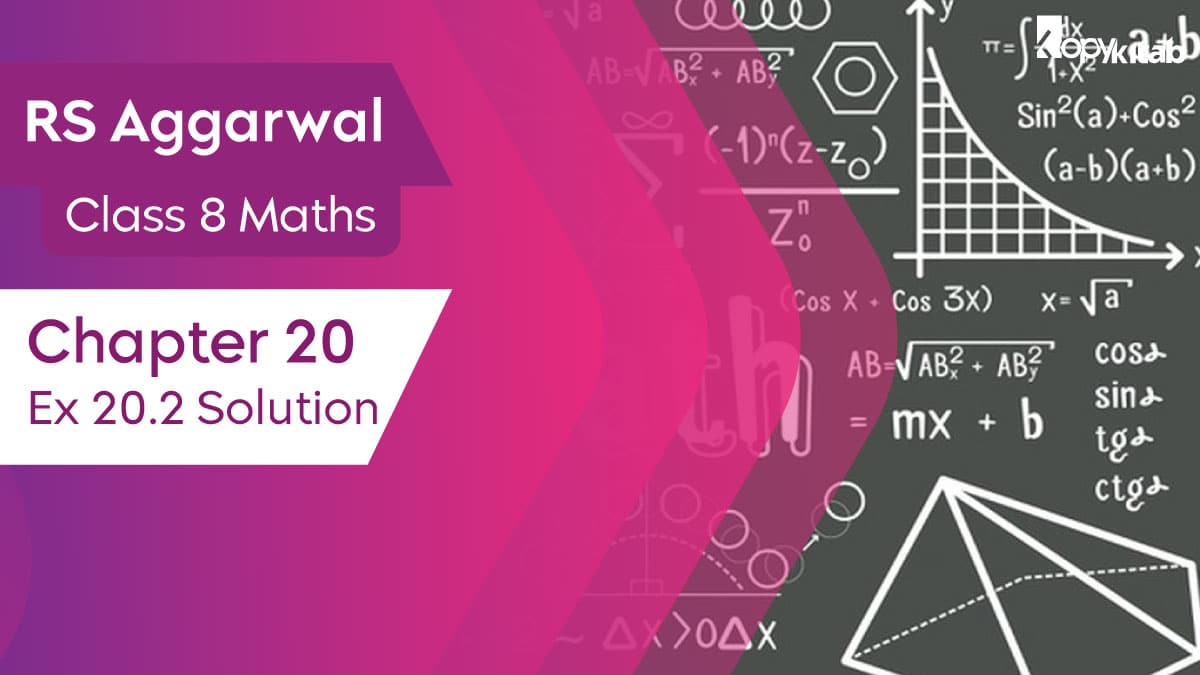
RS Aggarwal Class 8 Maths Chapter 20 Ex 20.2 Solutions: This exercise is based on concepts of the cylinder. The students learn how to calculate the volume, total surface area, curved surface area, the missing radius of the cylinder, and more. All the word problems in RS Aggarwal Class 8 Maths Chapter 20 Ex 20.2 Solutions are solved step by step with detailed explanations so that the students can easily study the topics of cylinder & learn formulae easily.
These solutions are very beneficial to grasp the concept of the cylinder in a simple & structured manner & enhance their analytical skills to acquire higher marks in the final exam. These solutions also include a thorough explanation of each topic.
Access RS Aggarwal Class 8 Maths Chapter 20 Solutions PDF
Download RS Aggarwal Class 8 Maths Chapter 20 Ex 20.2 Solutions
RS Aggarwal Class 8 Maths Chapter 20 Ex 20.2 Solutions
Important Definition for RS Aggarwal Class 8 Maths Chapter 20 Ex 20.2 Solutions
- Cylinder Area
The area of the cylinder is the total region covered by a cylinder in three-dimensional space. It is equal to the sum of the area of two circular bases and curved surface area. The different parameters that are used to measure the area of the cylinder include height, radius, axis, side, and base.
The radius of the cylinder is termed as the radius of the circular base.
The height of the cylinder is calculated by measuring the perpendicular distance between two circular bases and the line that joins the center of the base is known as the axis.
- Formula of Area of a Cylinder
The total area of a cylinder is based on Curved Surface Area (CSA) & Base Area
- Curved Surface Area
It is termed as the area of the curved surface of any given cylinder having base radius ‘r’, & height ‘h’. It is also defined as Lateral surface area (LSA). The formula for a curved area or lateral area is CSA or LSA = 2π × r × h Square units
- Base Area of Cylinder
It is in a circular shape. Area of the circular bases of cylinder = 2 (πr2)
- Total Surface Area of Cylinder (TSA)
It is equal to the sum of areas of all its faces. The Total surface area with radius ‘r’ & height ‘h’ is equal to the sum of the curved area & circular areas of the cylinder.
TSA = 2π × r × h + 2πr2= 2πr (h + r) Square units
- Surface area of a cylinder
It is the area occupied by its surface in a three-dimensional space. A cylinder is a three-dimensional structure having circular bases that are parallel to each other. It does not have any vertices. The surface area is expressed in square units such as cm2, m2, and so on. A cylinder can be seen as a set of circular disks that are stacked on one another. The cylinder has both surface area and volume.
The Surface Area of Cylinder = Curved Surface + Area of Circular bases
S.A. (in terms of π) = 2πr (h + r) square unit where, π (Pi) = 3.142 or = 22/7
r is the radius of the cylinder & h is the height of the cylinder
Know more at the official website.
